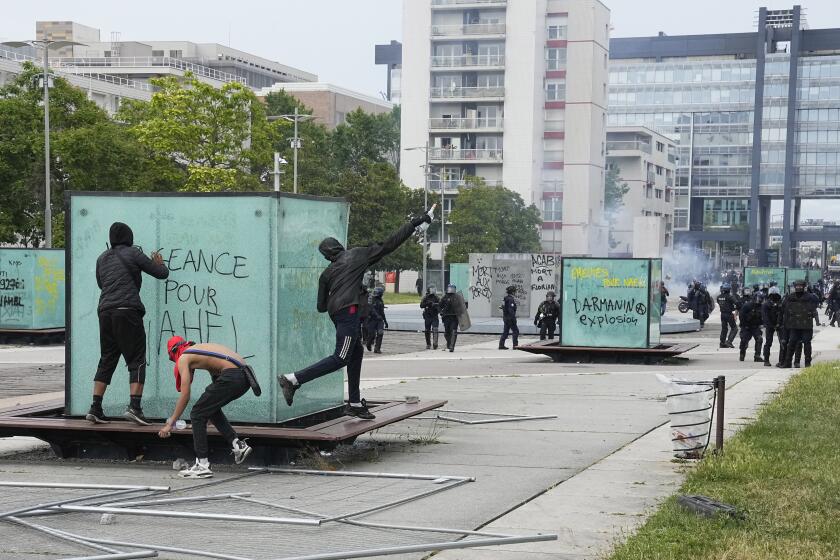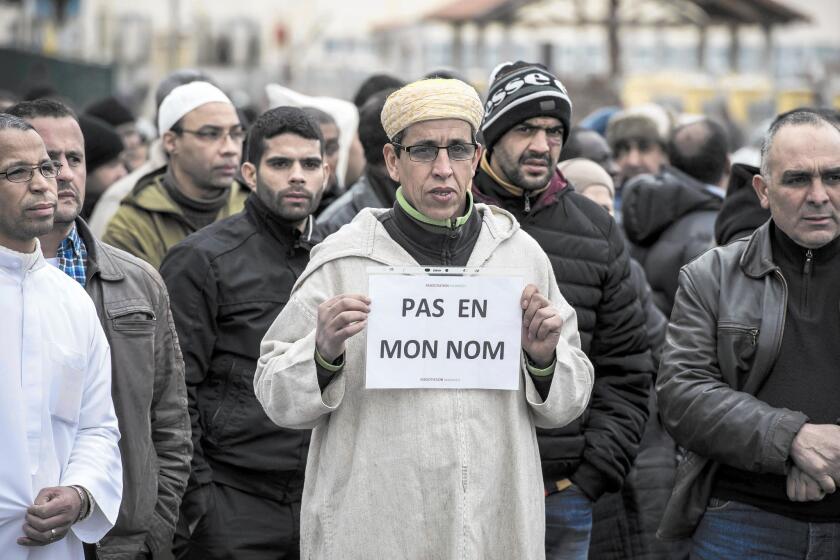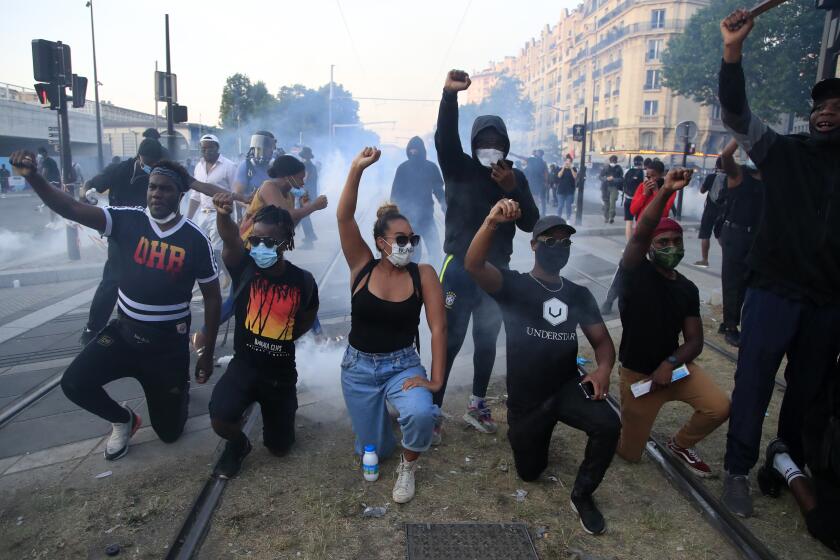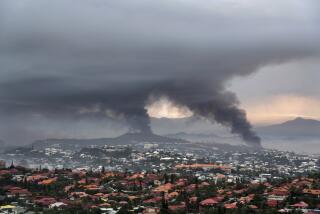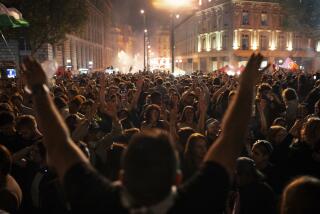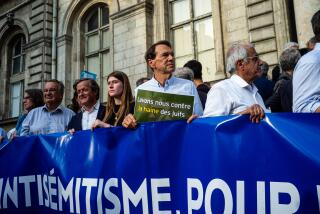France struggles to confront one of its biggest taboos: race
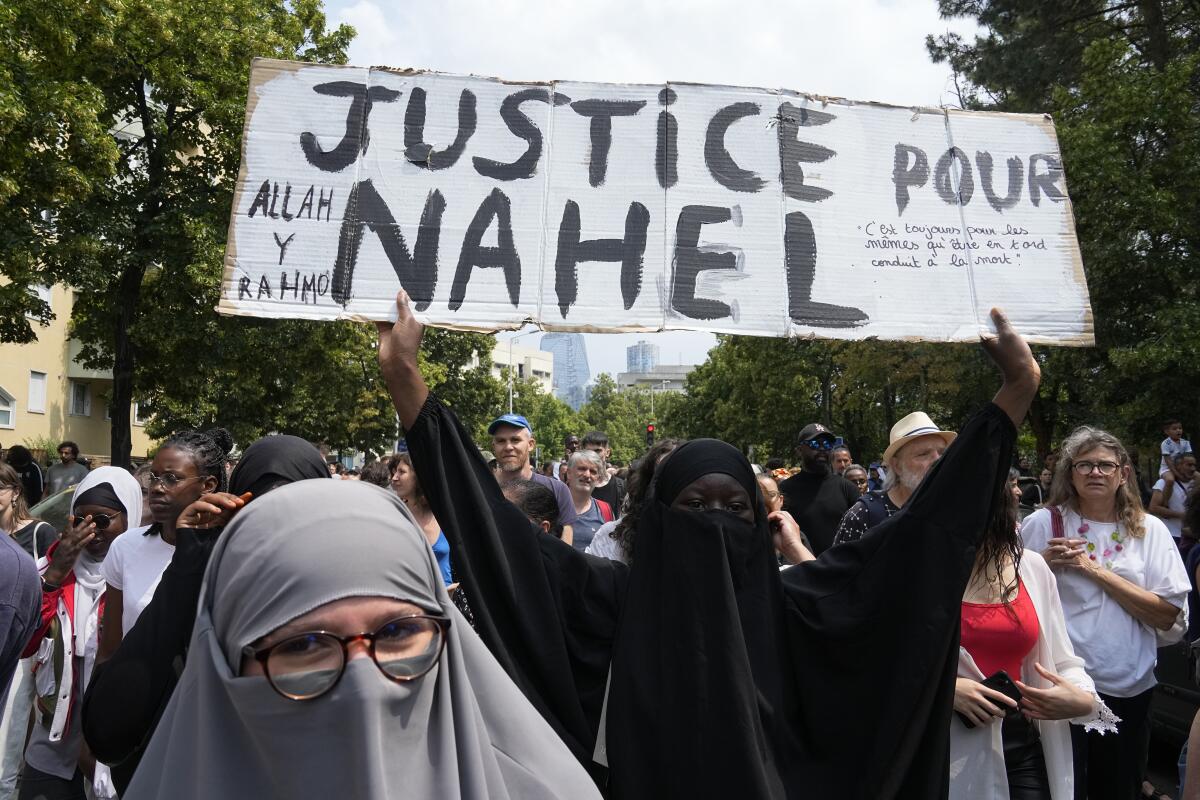
PARIS — Police shoot and kill a dark-skinned teenager. Video from a bystander goes viral. The worst riots in two decades result in thousands of arrests and more than a billion dollars in property damage. A president struggles to unite the country and promises to address the “deep causes” of the violence. The uprising subsides, but tensions persist as minorities call for reform and accuse the government of ignoring a long history of discrimination.
It could be another chapter in the story of race, policing and inequality in America.
But this is France, an increasingly diverse country of 68 million that is officially “colorblind” but only recently has started to grapple with the much more complicated reality.
Just as the killing of George Floyd by Minneapolis police in 2020 sent people of all races into the streets, the demonstrations that followed the killing of Nahel Merzouk — the 17-year-old son of Moroccan and Algerian immigrants — were notable not only for their size but also for the participation of many white residents.
French courts are working overtime in fast-track trials of more than 3,600 people arrested in unrest sparked by the police killing of a 17-year-old.
“This is kind of like our George Floyd moment,” said Gabriel Schneider, a white, 34-year-old web designer in Paris who recently marched in the suburb of Nanterre, where Merzouk died on June 27 during a traffic stop.
“But this is different also because we are France,” Schneider said. “Just bringing up that he was, as Americans would say, ‘brown,’ and that police treat people differently because of race, is almost radical for our culture.”
Here is a look at the French reckoning and how it compares with the one in the U.S.
A ‘colorblind’ approach to race
Urban France is racially diverse. Moroccan and Senegalese cafes line the streets of Paris alongside traditional boulangeries and patisseries. The soccer player Kylian Mbappé, a national symbol, is a Black man whose parents are from Cameroon and Algeria.
But, technically, French laws and institutions don’t see race. The aversion traces itself to the French ideal of “universalism,” which says national identity trumps all other identities.
In sharp contrast to the United States, where government forms and job applications routinely ask about race, France has long banned census questions on race, saying the category is a false distinction that gets in the way of equality. The ban stems in part from guilt over the Holocaust, when French authorities cooperated with Nazis in using census data to identify Jews.
In the last decade, the French government has also erased the word “race” from its constitution and penal laws.
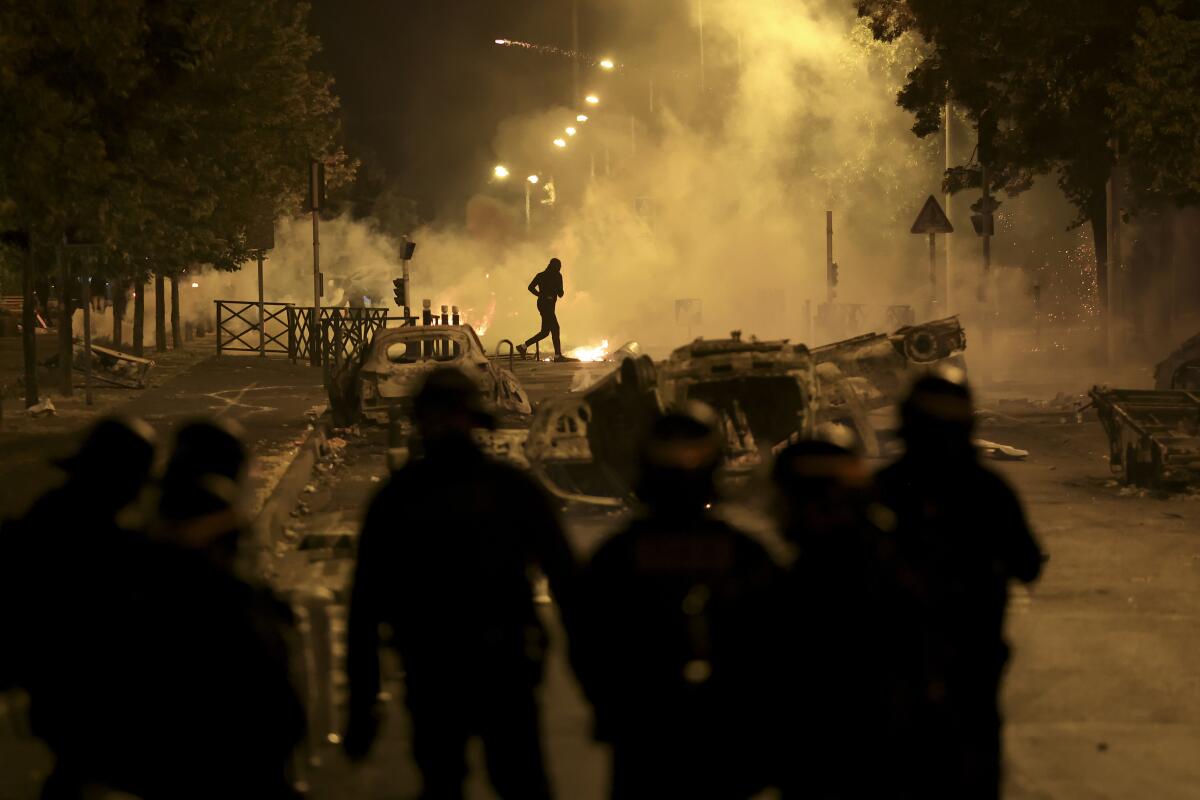
The restrictions mean there is limited demographic data. The Pew Research Center says France is about 9% Muslim; Islam is the second largest religion in the country. The majority are of Arab ancestry. Rough estimates put the Black population from as low as under 1% to as high as 5%.
Immigration to the suburbs
U.S. suburbs are generally wealthier and whiter than the cities, due in part to a history of “white flight” from urban areas after the desegregation of schools in the 1950s.
In France, a different pattern emerged. The suburbs, known as banlieues, literally “places on the margins,” are poorer than the cities and mostly inhabited by minorities.
They have been around for more than a century and were once known for working-class people who had joined the Communist Party after industrialization. That began to change in the late 1950s as fights for independence began to take hold in Algeria and elsewhere in Africa.
Those under colonial rule were required to learn the French language and culture and, in the case of Algeria, were considered French citizens. As France was pressured to relinquish control of its colonies, it signed treaties giving residents of newly independent nations the ability to work in France as long as the French could do the same in former colonies.
To take in the new migrants, the government embarked on widespread public housing construction in the banlieues.
Generations later, the suburbs are populated mainly by French-born citizens of African and Arab heritage, and the word banlieue has become synonymous with high crime rates and a largely Muslim underclass widely seen as outsiders. In the poorest suburbs, more than 43% of residents live in poverty, compared with 8.5% nationally. Unemployment is nearly three times the national average.
Unrest across France sparked by the police killing of a 17-year-old has appeared to abate after six nights of violence and a huge police deployment.
“We’ve been excluded from society,” said Sofiane El Bekri, 27, a Paris-based, French-born creative director of Tunisian and Algerian descent who grew up in a banlieue of Lille in northern France.
Rose Ameziane, who is of Algerian heritage and also grew up in a banlieue, said that when police killed Merzouk last month, the anger made perfect sense.
“That could have been any one of us,” said Ameziane, the president of Mouv’Territoires, an organization that works to revitalize the banlieues. “That’s really what people feel.”
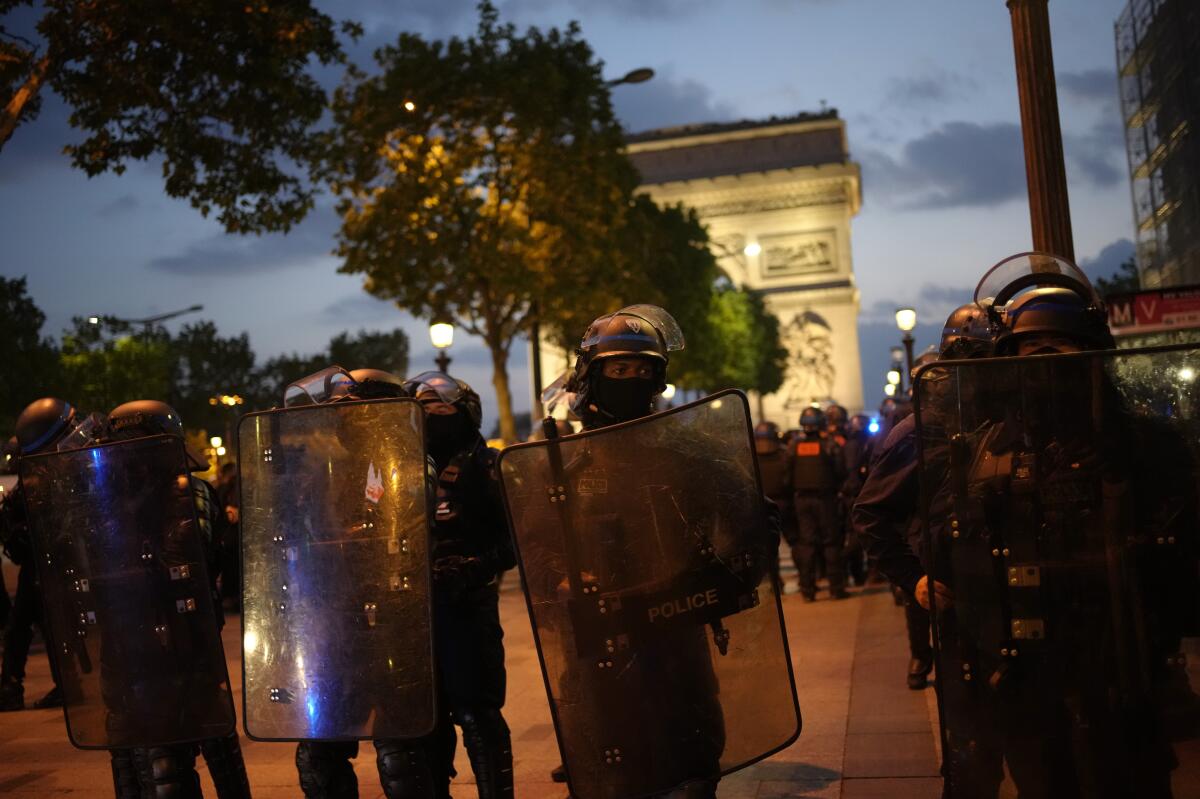
Complaints of over-policing and racist stops
The relationship between banlieue residents and police has been fraught for decades.
A mostly white police force has long patrolled the largely minority neighborhoods with high crime rates, leading to generations of distrust over racial profiling and overly aggressive law enforcement. Major protest movements originating on the outskirts of Paris and Lyon and accusing police of racist violence have taken place every decade since the 1980s.
“Identity checks” — equivalent to what Americans would call “stop and frisk” — are common. A 2017 report from France’s ombudsman said police were 20 times more likely to stop “young men perceived to be Black or Arab” compared with white people.
The drama based on an actual incident of police brutality is France’s official submission for international-feature Oscar consideration.
Fear of police was at the root of a 2005 incident in Clichy-sous-Bois outside Paris in which three teens — of Mauritanian, Tunisian and Turkish descent — ran when they saw a patrol car. Police were not looking for the teens but chased them anyway. Two were electrocuted to death while hiding in a high-voltage transformer. Their deaths triggered a massive uprising.
Attempts at American-style “community policing” with hopes that it might quell tensions have been met with resistance from police and government officials. Resentments have only grown since 2017, when a new law gave officers more leeway to shoot suspects, including at traffic stops.
In the case of Merzouk, video shows an officer shot him as his car rolled away, which activists say means he was not a threat.
During the riots, a police union statement described protesters — many of them young minorities — as “vermin” and “savage hordes.”
Religion and accusations of anti-Muslim bias
American debates on racism are typically distinct from those on religion. In France, the two come together.
Hundreds of French Muslims — mostly of Arab heritage — attended the funeral for Merzouk. Many mourners told journalists they felt like second-class citizens in France because of the color of their skin and religion.
In contrast to the United States, where religious freedom means allowing people to practice their faiths, French secular policy bars religion from public life, which has led to bans on wearing religious symbols — including Christian and Jewish ones — in schools and government jobs. But conflicts over hijabs (head coverings) and burkas (full-body coverings) worn by some Muslim women have been especially heated.
Word that one of its native sons blasted his way into terrorist infamy has brought unwelcome scrutiny to La Grande Borne, a crime-ridden housing project in the gritty southern Paris suburb of Grigny.
France’s uneasiness with Islam grew more acute after 2015, when Muslim extremists — angry that a satirical magazine published drawings depicting their prophet, a taboo in the faith — attacked the offices of Charlie Hebdo and killed 12 people.
In a speech last year at Paris’ central mosque, French President Emmanuel Macron drew criticism when he said he wanted French Muslims to follow a version of their religion that was “faithful to the values of the Republic.”
Many Muslims saw that as an attempt to water down their faith.
Anti-discrimination efforts
Each year, the government Commission on Human Rights does an accounting of acts of discrimination and a survey of views on race.
Last year, it reported 188 anti-Muslim offenses against property and people, up 22% from 154 in 2019. The numbers are probably an undercount. More than 90% of Black respondents said they regularly dealt with racism.
Overall, 79% of those polled said a “vigorous fight against racism is necessary in France.”
That was an increase of 20 percentage points in nearly two decades. About 6 in 10 respondents said they were “not at all racist.” At the same time, more than half said they believed that “there are too many immigrants in France” and that “many immigrants come to France solely to take advantage of social security and protection mechanisms.”
Faced with those statistics and mounting public pressure, the government has started to acknowledge that the country has a problem with discrimination.
Prime Minister Elisabeth Borne announces a plan to fight racism, antisemitism and all discrimination, including against Roma.
In January, Prime Minister Elisabeth Borne announced a national, four-year plan to root out racism and antisemitism. It includes sending youths on annual Holocaust memorial trips and increasing teacher training. But to the dismay of critics, it does not address racial discrimination by police.
Activists and scholars say the government should also start collecting data on race.
“How can you combat racism if you don’t acknowledge race?” said Marie des Neiges Léonard, a professor at the University of South Alabama and author of “Racial Diversity in Contemporary France: The Case of Colorblindness.”
Léonard, a French and U.S. citizen, said that although the ideal of colorblindness is being challenged like never before, it still has powerful backers.
“The French politicians have not learned a single thing from these urban riots,” she said. “They keep talking in the same ways they have done since the 1980s, with little seeming to change. Because we are not talking deeply about the core issue, race, we should expect more riots, not less.”
Kaleem reported from Los Angeles and special correspondent Monique El-Faizy from Paris.
More to Read
Sign up for Essential California
The most important California stories and recommendations in your inbox every morning.
You may occasionally receive promotional content from the Los Angeles Times.
